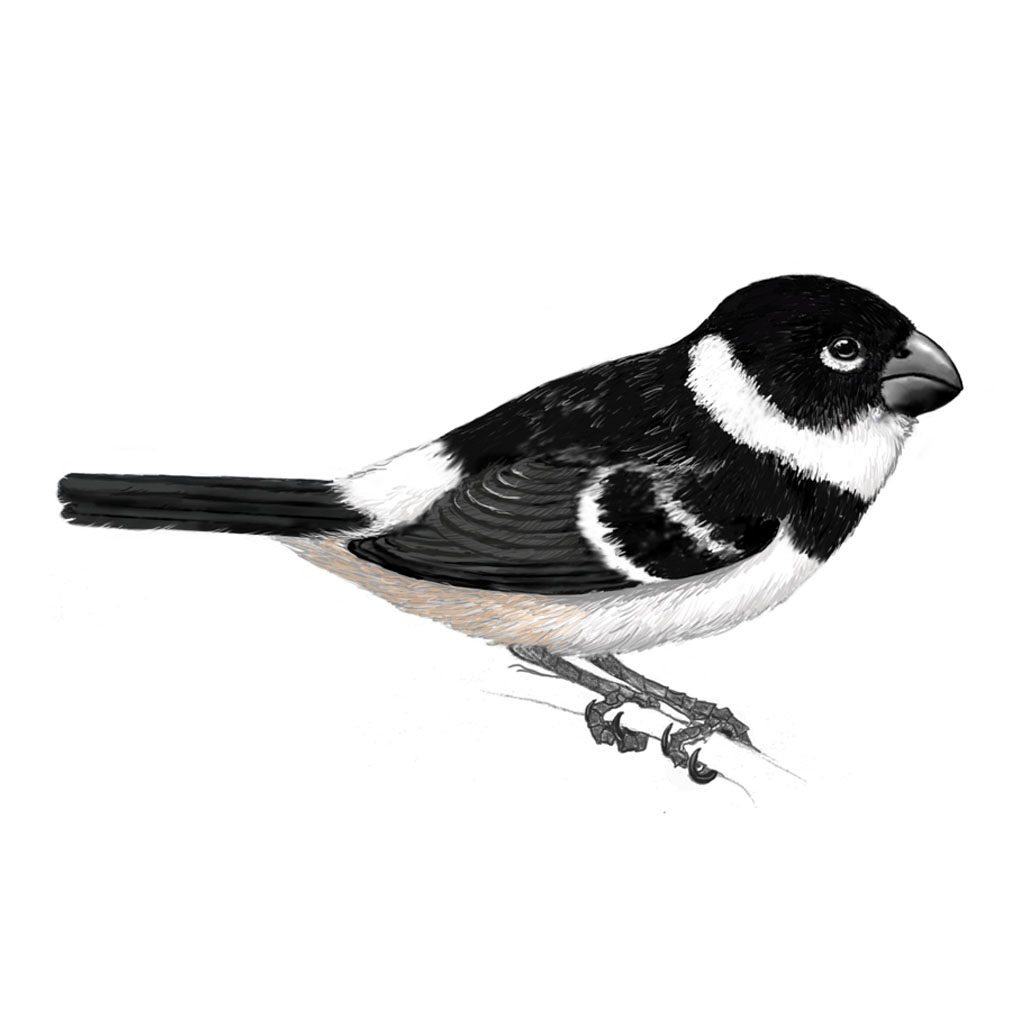Morellet’s Seedeater

Belize shares some of its birds with the United States, as they migrate to and fro through the seasons. One of those migrants is the White-collared Seedeater, a tiny flitting bird you might overlook until you see the bright white collar flashing in the shrubbery as it clambers about plucking at seeds. While the male is black and white, usually with a couple of bright white wing-bars, and possibly with a cinnamon tinge on its underside, the female is all-over tan with cream wing-bars – the kind of bird that has you scratching your head if viewed alone. But seedeaters almost always forage in flocks, and she’ll probably be right alongside one or more easily identified males in the group. Watch for White-collared Seedeaters in grassy areas, often associating with tiny coal-black Thick-billed and Variable Seedeaters.
The seedeater is true to its name, eating the small seeds of grass and other “weedy” vegetation such as ragweed and amaranth, sometimes perching lookout on a stem of grass, so light-weight that the grass supports it easily.
The large, sturdy bill is designed for crushing seeds, but this seedeater is also adept at catching insects, and can sometimes be seen fly-catching if a suitable insect flies by. I’ve seen collared seedeaters flycatching from low tree branches around my house, although they don’t show up here very often. This rainforest is definitely not a “grassy area” but they may follow the road in from the pasture at the gate as they look for seeds. For you birders: Morellet’s Seedeater was formerly clumped with the Cinnamon-rumped Seedeater as a White-collared Seedeater, Sporophila torqueola. Now the Cinnmon-rumped Seedeater retains the torqueola specific name, and the name White-collared Seedeater is no longer in use.